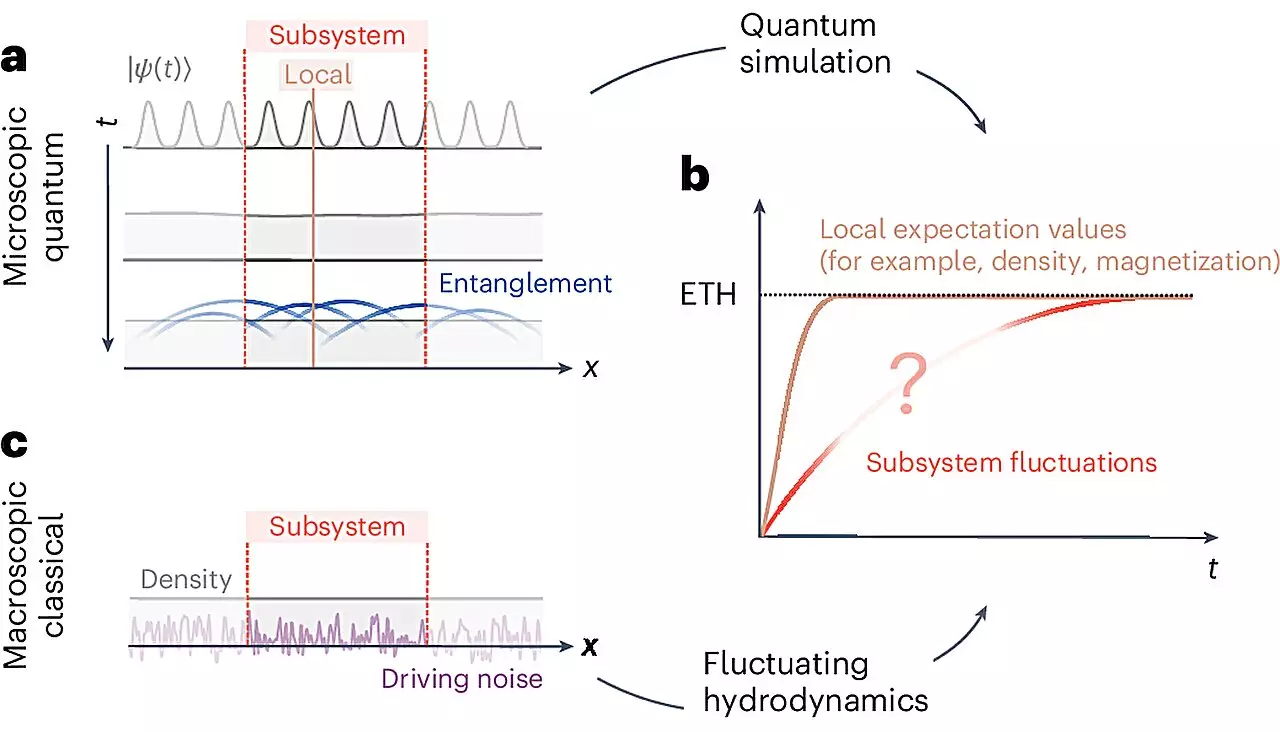When dealing with systems that involve many interacting particles, the complexity and chaos that can arise may seem overwhelming. However, is it possible to simplify the description of these systems using simple theories? This question was investigated by a research team led by Professor Monika Aidelsburger and Professor Immanuel Bloch from the LMU Faculty of Physics, who delved into the world of quantum many-body systems to find answers to this intriguing question.
In their study, the research team discovered indications that even highly complex quantum many-body systems can be described on a macroscopic scale using simple diffusion equations with random noise. This finding challenges the traditional notion that the behavior of quantum systems must be analyzed at the microscopic level. Julian Wienand, a doctoral candidate in the research team, highlighted the concept of hydrodynamics where flow behavior can be described without delving into the physics of individual particles. This shift towards macroscopic analysis simplifies the understanding of these systems and emphasizes the significance of diffusion constants in determining their overall behavior.
One of the key insights from the study was the concept of fluctuating hydrodynamics (FHD), which takes into account the random fluctuations in particle movements. These erratic motions, known as Brownian motion, are a consequence of the random collisions between particles and water molecules. According to Wienand, FHD theory suggests that, under specific conditions, the behavior of a system can be characterized by a single quantity, such as the diffusion constant, despite the underlying complexity and chaos at the microscopic level. This novel approach simplifies the macroscopic description of these systems and eliminates the need to focus on microscopic interactions.
While the application of FHD in chaotic systems shows promise, the research team acknowledged the unique challenges posed by quantum systems. Quantum particles interact based on fundamentally different laws of physics compared to classical particles, leading to phenomena like uncertainty and entanglement that defy traditional intuition. Despite these complexities, quantum systems stand to benefit greatly from a simplified FHD description due to their intricate calculations and behaviors that are difficult to predict.
To test the applicability of FHD in quantum systems, the research team conducted experiments on chaotic many-body quantum systems using ultracold cesium atoms in optical lattices. By observing the dynamics of the system over time, they were able to measure the fluctuations and density correlations, confirming that FHD could accurately describe the system both qualitatively and quantitatively. This experimental validation provides crucial insights into the possibility of applying macroscopic diffusion processes to chaotic quantum systems.
The findings of this study shed light on the potential for simplifying the description of chaotic quantum systems through a macroscopic lens. By embracing the principles of FHD and recognizing the importance of diffusion constants, researchers may unlock new ways to analyze and understand the intricate behaviors of quantum particles. While the road ahead may be challenging, the prospect of unifying chaotic quantum systems under a common theoretical framework holds promise for advancing our knowledge of the quantum world.


Leave a Reply